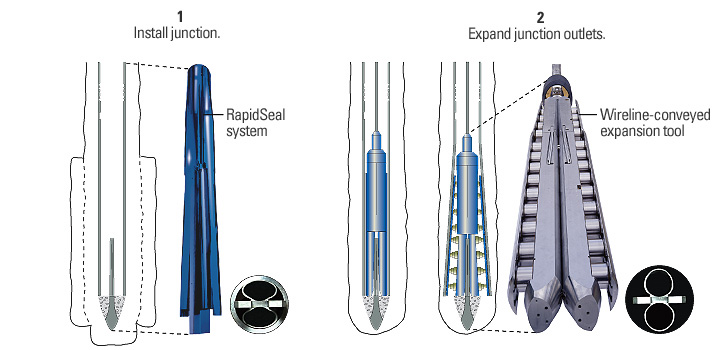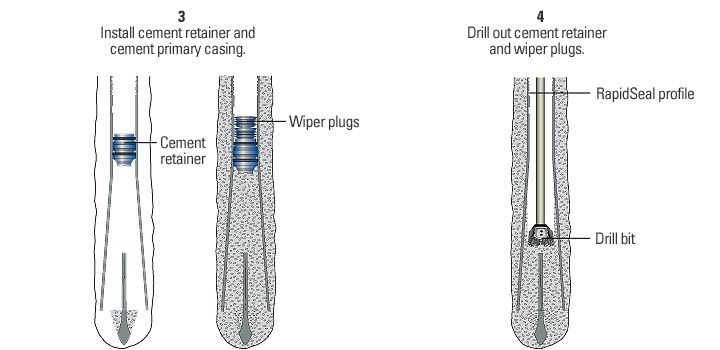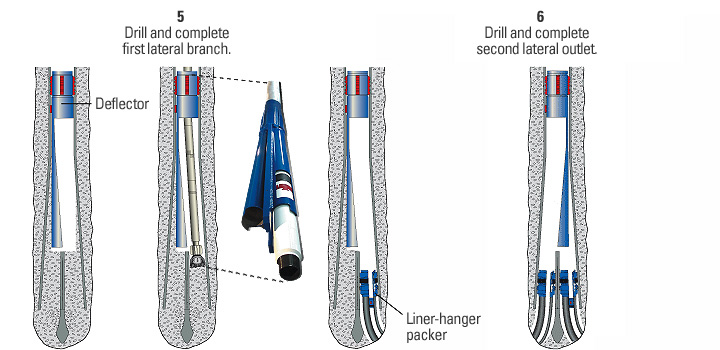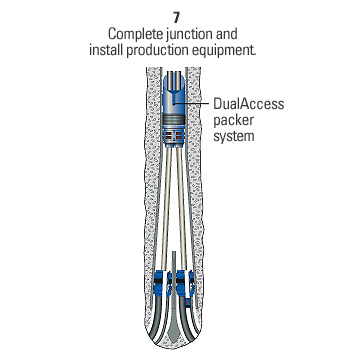The RapidSeal system is manufactured in advance, not constructed downhole, to
ensure pressure integrity. This TAML Level 6 system includes a prefabricated
section of parent casing and two smaller outlets. The outlets are compressed
in a special mechanical press to pass through the preceding casing and then
reformed
by a wireline-conveyed modular expansion tool.
Electric power operates a pump in the expansion tool that provides hydraulic
pressure to pistons in two saddles, which apply enough force to simultaneously
open and reform both outlets symmetrically. This expansion process, controlled
and monitored in real time from surface, is performed in a single trip that takes
about 45 minutes. Installation time compared with systems that use a mechanical
swedge is greatly reduced.
|




